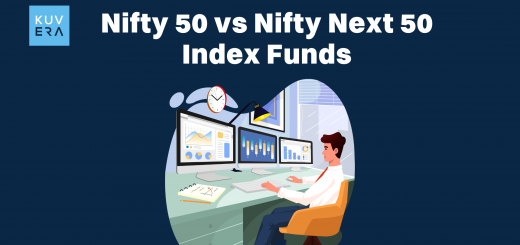Sometimes missing data tells us a lot more about a question than the data that is presented.
To understand this, let’s start with an anecdote.
In World War 2, USA assembled a bunch of statisticians to evaluate which parts of the fighter planes needed more armour. As planes would come back from soirees they would count which part of the plane (engine, fuselage, etc) had been hit by how many bullet holes.
They found that, on the planes that returned, the engine area had 1.11 bullet holes per square foot while the fuselage had 1.73 bullet holes per square foot. The common wisdom was to add more armour where the planes were getting hit more.
That’s when a brilliant statistician, Abraham Wald, came with the insight, the extra armour does not go where there are more holes (fuselage), but where there are fewer holes (engine). The insight was simple, planes were able to survive hits on the fuselage and were returning back. But those planes which were getting hit more on the engines were not returning at all. The missing planes and the missing holes were the keys to solving the problem.
If your ratings are so good, where is the data that 5-star funds outperform 4-star funds?
So, what is the missing data in the Mutual Fund star rating show?
Say you are the CEO of one of the rating agencies and your Chief Statistician or Chief Information Officer comes to you and says – “Hey boss, we have conclusive data that our 5 star rated funds outperform our 4 star rated funds by 3% annually over a 5-year holding period”.
What would you do? You would, of course, publicize this as much as you could, make the ratings very expensive to buy and earn a lot of money from them. Or maybe open your own hedge fund and invest based on your rating methodology.
All the rating agencies employ a lot of smart statisticians and investment professionals and if they had the above data they would be publishing it, updating it and talking about it every quarter. It’s not that they are not looking for this data, it is just that what they have does not show any outperformance of higher-rated funds. This is the missing data in the Mutual Fund star rating show. If your ratings are so good, where is the data that 5-star funds outperform 4-star funds?
So what do we have instead? Well, Morningstar says:
We have always been very clear that it’s not intended to predict future performance.
Similarly, Valueresearch Online says:
The assessment does not reflect Value Research’s opinion of the future potential of any fund. It only gives a quick summary of how a fund has performed historically relative to its peers.
Both Morningstar and Value Research Online also disclose that star ratings are completely mathematical with no subjective inputs, and represent a fund’s risk-adjusted return over the past 3y and 5y with the best performers receiving 5 Stars.
Hmm… so another fancy way to talk about past performance, as if 3y and 5y return and information and Sharpe ratio were not enough. Just like returns then, maybe the rating’s should also come with their own disclosure – “Ratings are subject to market risk and past ratings do not predict future returns.”
The data that exists, confirms that ratings are not predictive of future outperformance. The Wall Street Journal in a review called “The Morningstar Mirage” concluded –
Investors everywhere think a 5-star rating from Morningstar means a mutual fund will be a top performer—it doesn’t
A similar study by Advisor Perspectives finds that the probability that a randomly selected five-star fund will outperform a randomly selected four-star fund is only 50.6%. Essentially a coin flip.
If ratings do not predict future returns, and rating agencies universally disclaim that ratings are not predictive, then how did they come to be so important in the Mutual Fund ecosystem?
The answer lies in human psychology. No one ever fired an advisor or a broker for recommending a 5-star fund. The ratings then are both a safety net and a shiny badge for the advisor to be sold to the investor. And if a 5-star fund underperforms, well no one else saw that coming. But if you picked a lower rated fund which underperformed, then you are not a good advisor.
From the same Wall Street Journal piece –
Advisers get in trouble when they go against the grain. You isolate yourself more if you sell something else rather than just go with what research recommends.
Since most advisors go with the grain and recommend 5-star funds, these funds see huge inflows creating reasons for AMC with such funds to unofficially bless the ratings in their own investor materials. And thus the myth of the Mutual Fund star rating continues.
In part 2, the missing data on advisor outperformance 🙂
This blog was initially published by CNBCTV18 in the Personal Finance section.
Start investing through a platform that brings goal planning and investing to your fingertips. Visit kuvera.in to discover Direct Plans and start investing today.
#MutualFundSahiHai, #KuveraSabseSahiHai!











nitin
September 14, 2018 AT 10:55
Instead of just mentioning what others do wrong, why not talk about what you are doing right? What is Kuvera doing to highlight the best risk adjusted MF for instance? After all, pure returns alone can’t be the answer. The volatility matters.
Gaurav Rastogi
September 17, 2018 AT 06:05
This is not a critique of what others are doing. This is just an observation that investors put a lot of faith in rating agencies where as they themselves say they are just packaging past risk / return information.
We do show information ratio, which is risk adjusted return that includes volatility. We also show “wisdom of the crowd” rating (Top Rated, or funds with a star), which is based on ratings, fund flows and risk adjusted return. At every stage the idea is to simplify information presentation.
The point made here is different – all the MF data (volatility, return, sharpe ratio or information ratio) is essentially backward looking, so using that to make a forward looking decision is not a good idea.
Puru
January 4, 2020 AT 06:48
If every parameter is backward looking then why do we need them at all?
We need them for one simple reason, to tell us about a fund’s possible future trajectory.
It’s not prediction as much as it’s a hypothesis based on statistical analysis.
Gaurav Rastogi
January 6, 2020 AT 00:59
Thanks for writing Puru.
The parameters, beta, Sharpe ratio, variance-covariance, factor exposure, etc etc were all constructed for performance attribution. To differentiate manager alpha from more systematic sources of risk. And they are very good at performance attribution.
Almost all of the above, beta, sharpe, etc etc are bad predictors of future performance and there is enough statistical data (research papers) on that.
Vinod
May 19, 2021 AT 16:47
Please give option “Kuvera’s Best MF”. You have data, research team, so observe MF’s and do this for investors. Your recommendation is important for us.
Aniket
September 15, 2018 AT 17:00
Brilliant insight and head on.
Karthik Kanniyappan
October 8, 2018 AT 08:23
Historically, top 5 funds have changed every year in most of the segments which clearly means the ratings really doesn’t help much but don’t you think for an investor to begin with gives s good confidence to start investing from here ?? Overall… How does Kuvera come up with the suggested good funds based on a risk appetite ?? If not the formula which should obviously be confidential, what the ground theory you suggest ???
Anup Deshpande
October 10, 2018 AT 07:05
Excellent article. Really appreciate it! Is Kuvera, in near future, introduce a metric which could predict MF’s future returns and also the comparison of future returns within the same category? As an investor, it would be of great help !
Vipin
July 22, 2019 AT 06:48
pl bring platform for stock investing also
Nagu
October 2, 2019 AT 15:54
Well said Gaurav
Yadnesh
April 22, 2020 AT 18:11
There is no clarity on what are your insights. The gist of this article is “Don’t believe the ratings”. It would be better if you have written some insights on how can you avoid the pitfall created by value research and morning star by manipulating the ratings in the market.
Gaurav Rastogi
April 24, 2020 AT 06:04
They do not manipulate ratings. Its just that the ratings are calculated in good conscience, they just happen to be useless in predicting future returns.
Sathya
June 9, 2020 AT 15:21
What’s your view on ALPHA of the fund, isn’t true reflection of performance, which you can attributed solely to the decision making criteria of the Fund manager.
Gaurav Rastogi
June 16, 2020 AT 02:33
Alpha is not consistent either, it is backwards-looking. Funds that produced alpha in the past are not any more likely to produce alpha in the future.
Shailesh Rawat
July 2, 2020 AT 16:31
Hi Gaurav, very informative. You are among very few unbiased advisor with exceptional integrity. Keep going.
Gaurav Rastogi
July 4, 2020 AT 09:18
Thanks Shailesh
Shailesh Rawat
July 2, 2020 AT 16:39
Hi Gaurav, very informative. You are among very few unbiased advisor with exceptional integrity. Keep going. Only question what is the best approach then?
Gaurav Rastogi
July 4, 2020 AT 09:18
Thanks Shailesh
Himanshu Arora
September 17, 2020 AT 08:19
“What would you do? You would, of course, publicize this as much as you could, make the ratings very expensive to buy and earn a lot of money from them.” Do these amc’s buy these ratings from agencies like crisil etc.? Why should an investor trust a rating if it is bought?
What parameters would you suggest an investor to look for while selecting a fund?
Waiting for part 2- the missing data on advisor outperformance.
Regards
swapnils
September 23, 2020 AT 19:11
The article is 2yrs old but could not find PART2 of it.
“Ratings are bought” is pretty difficult to digest.
Gaurav Rastogi
September 24, 2020 AT 03:41
Ratings are not bought. That is the what if scenario.
Ajay shanka
June 4, 2021 AT 16:45
When kuvera is going to have facility to import NPS transaction in portfolio.